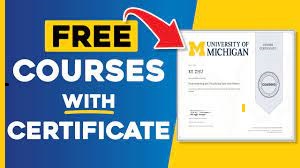Becoming a foreign exchange student is one of the most transformative experiences a young person can have. Whether you’re in high school, college, or graduate school, exchange programs provide an opportunity to study abroad, learn a new culture, build lifelong friendships, and gain global exposure.
In this 2025 complete guide, we’ll walk you through:
- What it means to be a foreign exchange student
- How exchange programs work
- Best destinations
- Eligibility & application process
- Scholarships & costs
- Benefits and real-life outcomes
What Is a Foreign Exchange Student?
A foreign exchange student is someone who temporarily studies in another country through a formal educational exchange program. Students live with host families, attend local schools or universities, and fully immerse themselves in the host country’s language and culture.
Most programs last between a semester to a full academic year, although summer and short-term exchanges also exist.
Types of Exchange Programs
There are several kinds of exchange programs available depending on your age, educational level, and goals:
1. High School Exchange Programs
- Ages: 15–18
- Duration: Semester to 1 year
- Live with host family & attend high school
2. University Exchange Programs
- For undergrad or grad students
- Exchange between partner universities
- Often under agreements like Erasmus+ or ISEP
3. Language & Cultural Exchange
- Short-term (2 weeks to 3 months)
- Focused on language learning and cultural exposure
4. Government-Sponsored Programs
- e.g., YES (Youth Exchange and Study), CBYX, NSLI-Y, Fulbright
Best Countries for Foreign Exchange Programs
| Country | Why It’s Great |
| USA | World-class universities, diverse communities |
| Germany | Tuition-free education, rich history |
| Canada | Safe, multicultural, high-quality education |
| Japan | Unique culture, advanced technology |
| France | Global art and language hub |
| South Korea | Modern campuses, K-culture popularity |
| Australia | Warm climate, top universities |
Tip: Choose your destination based on language comfort, career interests, and academic strength.
How Much Does It Cost to Be a Foreign Exchange Student?
The cost can vary widely depending on country, program provider, and whether scholarships are available.
| Expense | Estimated Cost (USD) |
| Program Fee | $5,000 – $25,000 |
| Flights | $800 – $1,500 |
| Visa & Insurance | $300 – $1,000 |
| Daily Living | $300 – $800/month |
| Emergency Fund | $500 – $1,000 |
Many programs offer full or partial scholarships, especially those sponsored by governments or foundations.
Top Foreign Exchange Student Programs (2025)
1. AFS Intercultural Programs
- High school exchanges in 50+ countries
- Host family placement, cultural activities
- Scholarships available
2. Rotary Youth Exchange
- One of the oldest exchange networks
- Covers high school year abroad
- Low cost, host families arranged
3. ISEP (International Student Exchange Programs)
- University-level exchange
- Matches students across member institutions
- Financial aid and grants available
4. EF Exchange Year
- Offers semester/year options for teens
- 15+ destination countries
- Language prep included
5. YES Program (Kennedy-Lugar Youth Exchange and Study)
- Fully funded for high schoolers from certain countries
- Sponsored by the U.S. State Department
Eligibility Criteria
Most programs require the following:
- Age: Typically between 15–30
- Academic performance: Minimum GPA (often ≥ 2.5–3.0)
- Language proficiency: Basic level or willingness to learn
- Health records: Physical and mental fitness
- Passport: Valid for at least 6–12 months post-return
- Interview: Personal interview and essay/screening
Some competitive programs have early deadlines—apply 6–12 months in advance!
How to Apply for a Foreign Exchange Program
- Choose a Program
Compare countries, duration, and costs. - Check Eligibility & Deadlines
Review application requirements and timelines. - Complete Application Form
Fill out personal, academic, and language background. - Submit Required Documents
Passport, transcripts, recommendation letters, medical reports. - Write an Essay or SOP
Why do you want to study abroad? - Attend Interview
Often via Zoom or with local program coordinators. - Await Results & Prepare for Departure
Once selected, apply for visa, arrange housing, and prepare documents.
Scholarships for Foreign Exchange Students
1. AFS Global Citizen Scholarship
- Need-based
- Covers tuition, travel, and insurance
2. CBYX (Congress-Bundestag Youth Exchange)
- Full scholarship for German-American exchange
- High school students
3. YES Program
- U.S. State Department funded
- Full cost covered
4. Fulbright Foreign Student Program
- For graduate-level students
- Covers tuition, travel, and stipend
5. DAAD Scholarships
- For German-bound graduate exchanges
- Wide eligibility criteria
Also check with your school counselor or study abroad office for local scholarships.
Benefits of Being a Foreign Exchange Student
- Cultural Immersion: Live with host families, attend local events
- Language Skills: Practical fluency in a second language
- Global Perspective: Understand international issues firsthand
- Academic Growth: Study in top institutions worldwide
- Personal Development: Gain independence, adaptability, and confidence
- Career Edge: Stand out with international experience on your resume
Students who studied abroad earn 25% higher salaries on average and are more likely to be hired post-graduation.
Tips for a Successful Exchange Experience
- Be open-minded: Respect local customs and adapt to new environments
- Stay organized: Keep copies of all documents
- Connect early: Communicate with host family and school beforehand
- Stay safe: Register with your country’s embassy
- Document your journey: Photos, blogs, and journals help capture memories
Frequently Asked Questions (FAQ)
Q1: Can I study abroad as a high school student?
Yes! Programs like AFS, Rotary, and YES offer full-year and semester exchanges for teens.
Q2: What’s the minimum age to be an exchange student?
Generally, 15 years old for high school programs and 18+ for college/university programs.
Q3: Do exchange students get credit for school abroad?
In most cases, yes. Schools typically evaluate your transcript and transfer credits upon return.
Q4: Do I need to know the language?
Not necessarily. Many programs offer language prep or English-taught classes.
Q5: Can I extend my exchange year?
Sometimes. You’ll need permission from your program, host family, and school.
Transform Your Future as a Foreign Exchange Student
A foreign exchange experience is more than just studying—it’s about becoming a global citizen. Whether you’re exploring Europe, Asia, or North America, the journey of being an exchange student will transform your worldview and your future.
With the right research, preparation, and mindset, you can live, learn, and thrive in another country—tuition-free or on scholarship.










